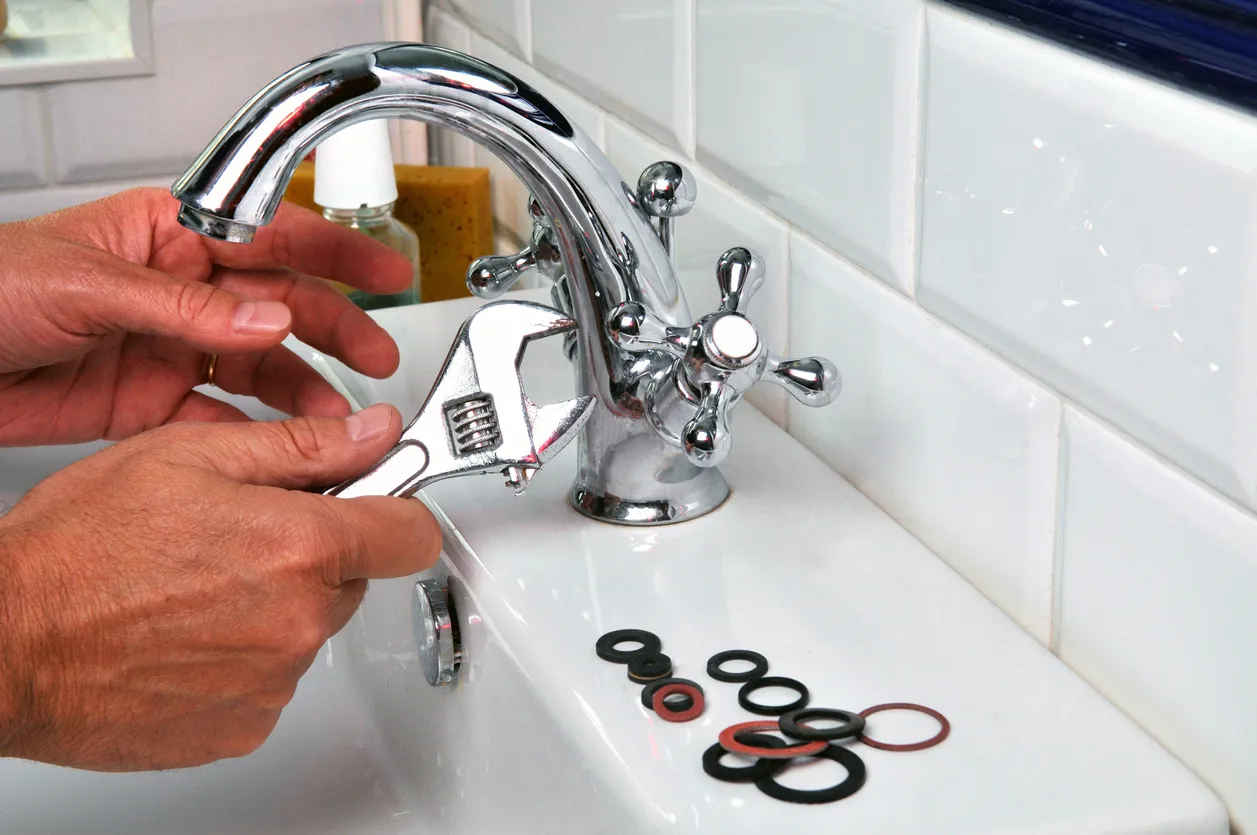This article further down about Leaky Faucets: Why They Happen & What to Do About Them is absolutely remarkable. Don't miss it.

Leaking taps could seem like a minor hassle, however their influence surpasses simply the annoyance of the sound. From wasting water to sustaining unneeded economic prices and health risks, ignoring a dripping faucet can result in different repercussions. In this write-up, we'll look into why it's crucial to address this common household issue quickly and effectively.
Wastage of Water
Environmental Impact
Dripping taps add dramatically to water wastefulness. According to the Epa (EPA), a solitary tap leaking at one drip per second can squander more than 3,000 gallons of water each year. This not just pressures water sources however also affects ecosystems and wildlife depending on them.
Financial Prices
Boosted Water Expenses
Beyond the ecological influence, dripping faucets can inflate water expenses significantly. The built up wastage in time translates into greater utility costs, which can have been stayed clear of with prompt fixings.
Possible Residential Property Damages
Furthermore, long term leaking can cause damage to fixtures and surface areas bordering the tap. Water accumulation can create staining, deterioration, and also structural problems if left neglected, causing extra repair service costs.
Health and wellness Issues
Mold And Mildew and Mold Growth
The constant existence of moisture from a dripping tap produces a perfect environment for mold and mildew and mold growth. These fungis not only endanger indoor air top quality yet likewise pose wellness dangers, particularly for people with respiratory problems or allergic reactions.
Waterborne Illness
Stationary water in dripping taps can become a breeding place for bacteria and various other pathogens, boosting the threat of waterborne diseases. Impurities such as Legionella bacteria prosper in stagnant water, potentially bring about major ailments when ingested or breathed in.
DIY vs. Expert Fixing
Advantages and disadvantages of Do It Yourself Repair
While some may try to deal with a dripping tap themselves, do it yourself repairs include their very own set of difficulties. Without correct expertise and tools, DIY efforts can aggravate the issue or result in insufficient fixings, prolonging the issue.
Advantages of Working With a Professional Plumber
Hiring an expert plumber makes certain that the underlying cause of the dripping faucet is attended to properly. Plumbers possess the knowledge and devices to detect and fix tap issues efficiently, saving time and reducing the danger of additional damage.
Step-by-Step Guide to Taking Care Of a Dripping Faucet
Tools Needed
Prior to trying to take care of a trickling tap, collect the needed devices, including an adjustable wrench, screwdrivers, replacement parts (such as washers or cartridges), and plumber's tape.
Common Tap Issues and Their Solutions
Recognize the type of tap and the certain concern causing the drip. Common issues include worn-out washers, rusty valve seats, or defective O-rings. Refer to manufacturer instructions or online tutorials for detailed advice on fixings.
Safety nets
Routine Maintenance Tips
To stop trickling taps, carry out routine maintenance such as cleansing aerators, evaluating for leakages, and replacing damaged components quickly. Furthermore, consider mounting water-saving gadgets or upgrading to extra reliable components.
Significance of Prompt Repairs
Addressing trickling faucets as soon as they're observed avoids further water waste and potential damages, eventually conserving both water and cash over time.
Impact on Home Worth
Understanding of Well-Maintained Residential Or Commercial Property
Keeping a property in good condition, consisting of addressing upkeep issues like leaking faucets, improves its perceived worth and value amongst potential customers or tenants.
Impact on Resale Value
Qualities with well-maintained plumbing components, including faucets, command greater resale worths in the realty market. Addressing leaking taps can contribute to a positive impression throughout home examinations and settlements.
Ecological Duty
Individual Payment to Conservation
Taking obligation for dealing with dripping faucets lines up with more comprehensive efforts toward water preservation and environmental sustainability. Every individual's activities jointly make a significant effect on maintaining precious resources.
Lasting Living Practices
By focusing on prompt repair work and embracing water-saving behaviors, individuals contribute to sustainable living methods that profit both existing and future generations.
Verdict
Resolving a dripping faucet surpasses simple benefit; it's a necessary action toward saving water, lowering financial expenses, and safeguarding wellness and residential property. Whether via do it yourself repair services or professional assistance, taking action to repair leaking faucets is a little yet impactful method to promote responsible stewardship of resources and add to a much healthier, extra lasting future.
How to Fix a Leaky Faucet: Step-by-Step Repair Guide
A leaky faucet may seem like a simple annoyance, but if it's not fixed promptly, that leak could cost hundreds to potentially thousands. From water damage to mold, mildew, and high water bills, even a tiny leak can be catastrophic if left unattended. Damage like this can even affect the overall value of your home, so it's important to take the right approach for leaky faucet repair. You may need the help of a plumber in some cases, but we've got a few tips you can try on how to fix a leaky faucet before calling the pros.
Four Faucet Types
When you're learning how to fix a leaky faucet, the first step is knowing what kind of faucet you're working with! There are four common types.
Cartridge Faucets
Cartridge faucets come in one- or two-handled varieties. In one-handled cartridge faucets, hot and cold water combines in a single cartridge. In the two-handled versions, hot and cold water are controlled separately and mixed in the faucet.
Ball Faucets
Ball faucets have a single lever you push up and down to adjust the pressure and rotate to change the temperature. A slotted metal ball controls the amount of water allowed into the spout.
Compression Washer Faucets
They're the oldest type of faucet, but they're still used in many homes — especially older ones. Compression faucets have two separate handles that, when turned, raise or lower the washer that seals a water valve. This valve stops water from flowing through the faucet when it is turned off.
Disc Faucets
Disc faucets rarely need to be repaired due to their maintenance-free design. The water flow is controlled by two discs — the upper one raises and lowers against a fixed lower disc, creating a watertight seal. If your disc faucet starts leaking, you may need to replace the seals or clean residue buildup from the inlets.
Fixing a Leaky Faucet
Step 1: Turn Off the Water
Whether you're learning how to fix a leaky bathtub faucet or how to fix a leaky kitchen faucet, always turn off the water supply to your working area when you're fixing a leak. The last thing you want is a flood added to your list of things to fix.
Look for the shutoff valves below your sink or around the tub and turn them clockwise to stop the water flow. If your faucet doesn't have shutoff valves, you may need to turn off the water for the whole house. Check to make sure it's off by turning the faucet on. If nothing comes out, you're ready to start the repair.
Step 2: Take Apart the Faucet
How you disassemble your faucet depends on the type of fixture you have. You can use a flathead screwdriver to remove the caps on top of the handle or handles for cartridge and compression faucets. Inside, you should see handle screws. Unscrew these with a screwdriver to remove the handle.
Disc- and ball-style faucets will typically have an inlet screw near the handle, and removing that will reveal the interior of the faucet.
Detach the Valve Stem
For cartridge- and compression-style faucets, you'll see the inner valve stem or cartridge once you remove the faucet handles. If you have a compression faucet, unscrew the brass valve stem. If you have a cartridge faucet, pull out the cartridge. If your cartridge has been in place for a while, it may require some tools or extra force to remove it due to mineral deposits.
Examine and Replace Parts
Once you've removed the parts, check them out to confirm what needs to be replaced. You may see corroded rubber washers, O-rings, stems, or cartridges. On a ball-style faucet, check the seats and springs for damage.
If you need to repair a leaky disc faucet, check the inlet and seals on the lower disc.
Once you determine what parts must be replaced, visit your local hardware store. Bring the damaged parts with you to ensure you can purchase the correct components to replace them.
Clean Valves and Faucet Cavity
If you've removed a stem or cartridge, you may notice mineral buildup in the faucet's threads. Use white vinegar to clean the valve seat by soaking it for a few minutes, then scrub it away with a soft toothbrush and rinse with warm water. You can also clean the interior of the faucet in the same way.
Reassemble the Faucet
Once your faucet is cleaned and the required parts have been replaced, it's time to reassemble it. Put the pieces back together and slowly turn the water supply back on. Doing this slowly is crucial because too much initial water pressure can damage the new hardware you've just installed.
https://homewarranty.firstam.com/blog/how-to-fix-leaky-faucet

I recently found that article about Why Is It Important To Fix Your Leaking Tap/Faucet? when doing a search on the search engines. Sharing is good. Helping people is fun. We take joy in reading our article about 4 Common Reasons for a Leaky Faucet.